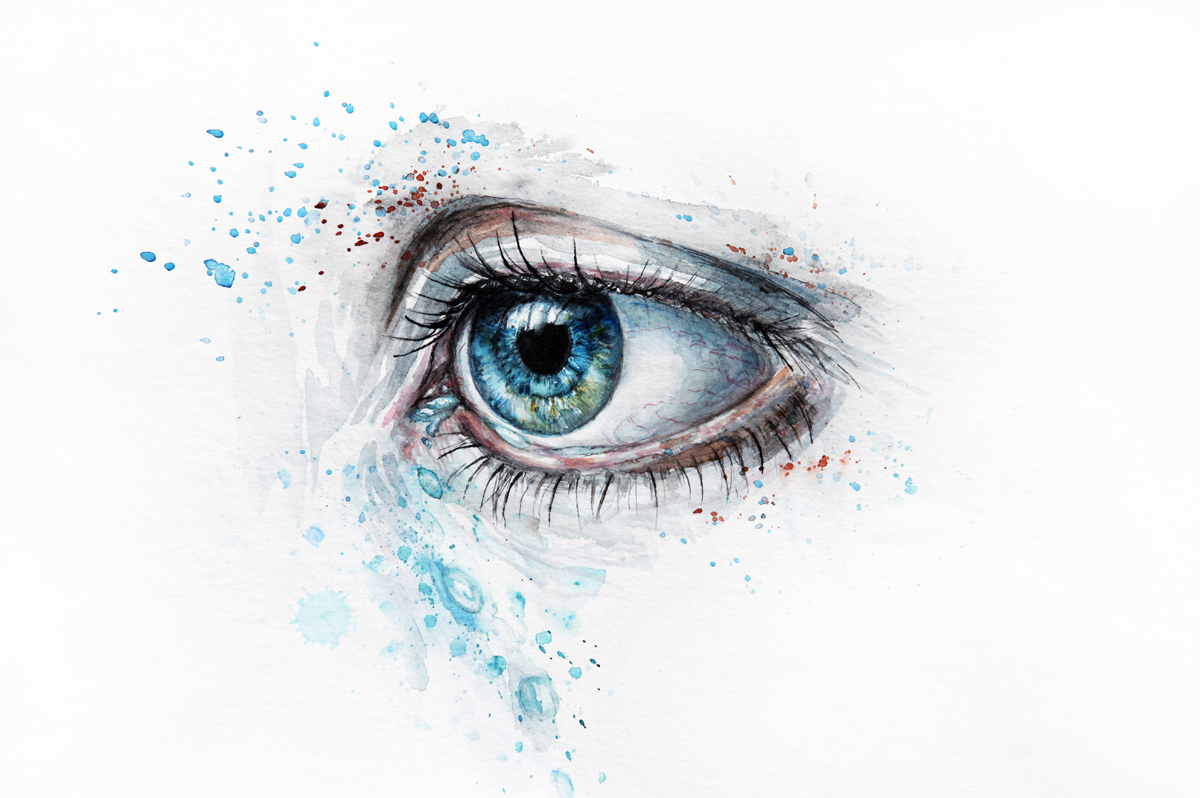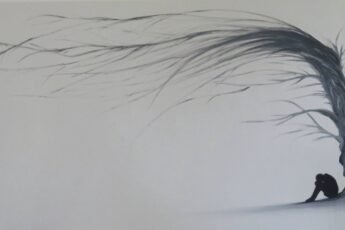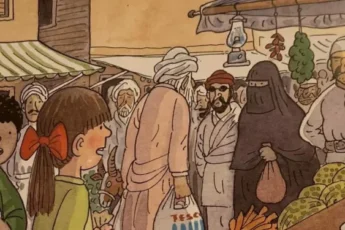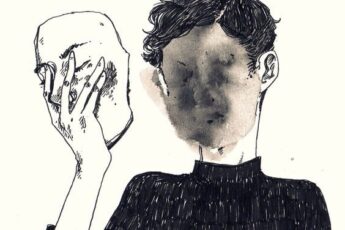
THE WHITE TEARS FOR AFGHANISTAN’S WOMEN
It makes sense, since before missiles are fired or bombs are dropped, war requires a hard sell to the public. We must construct, reinforce, and peddle the narrative to the public. This helps to ensure public opinion is controlled, resistance is problematised, and the parameters of debate are tightly regulated.
Western pledges to improve the conditions of Afghan women were one of the most prominent justifications for the intervention and subsequent military operations to defeat the Taliban. What else could unify, outrage, and indulge the Western white-saviour complex better than Afghan women who needed to be saved from their male counterparts?
The military industrial complex cry to “Save the women!” has the same rhetorical framing as “Support our troops” (or “Support our lads!” for a British parlance), rather than “Support the war”, which is what is really being asked.
Recent Wikileaks reports reveal how the Central Intelligence Agency (CIA) constructed a PR “sell” of the war which revolved around saving Afghan women and girls. [1] It literally weaponised liberal feminism to invade, occupy, and make spectacular profits from one of the poorest countries in the world.
The Bush Administration wasted no time in framing the War on Terror as “also a fight for the rights and dignity of women”. Then First Lady Laura Bush openly and swiftly condemned the “severe repression” against women in Afghanistan. The UK Prime Minister’s wife, Cherie Blair, called for moves to “give back a voice” to Afghan women.
In the same breath that the War on Terror was declared, the barbaric treatment of Afghan women under Taliban rule was dramatically thrust into the Western public consciousness. The Western media machine struck narrative gold with the Taliban: these were hostile brown bearded men with turbans and ethnic clothing. They became a dangerous Other as the greatest nation on Earth faced a group who were uncivilised, clumsily handled weapons, failed to speak English, and were hostile to “the freedoms we cherish”.
In 2010, then US Secretary of State Hillary Clinton vowed to defend Afghan women’s rights. This was a huge part of liberal feminism – vowing to save the Afghan women, while bombing them. So began “white men saving brown women from brown men” in Afghanistan, as feminist scholar Gayatri Chakravorty Spivak eloquently put it. [2]
Funnily, saving Afghan women and girls played out a lot like making them disappear off the face of the Earth altogether. Over 70,000 civilians were killed and countless injured in the US’s longest-running war, the majority of whom were women and children. [3]
Fast forward to 2021, and we are hearing something not too dissimilar. We have come full circle to see dangerous militarism cloaked in humanitarian and women’s rights language, where the same arguments made by Clinton have been recycled. “Western intervention is something million[s] are praying for right now”, tweeted anti-FGM campaigner Nimco Ali recently.[4] There is apparently now a feminist case for keeping Western troops in Afghanistan.
But why? “The imaginary future bloodshed of the Taliban has so much more potential weight in the coverage than the actual people who have been killed by the US in the last 20 years.”[5]
During these two decades of international intervention, troop-contributing nations paid lip service and cash toward women’s rights, but rarely provided the political capital needed to realise actual gains. Over time, the lip service and cash dwindled too. In 2011, the Washington Post reported on how efforts to support women’s rights were being stripped out of US programs. This article quoted an official who said, “All those pet rocks in our rucksack were taking us down.” US aid funding to Afghanistan fell from 16,748 million dollars in FY 2010 to 3,120 million dollars in FY 2021.[6]
The West’s intervention was framed as an act of benevolence, with many convinced by the characterisation of a liberatory US military combat. Afghan women were used as symbols and pawns in a hugely complex geopolitical context. This civilising mission by the US meant the diverse needs and interests of Afghan women were obscured and obfuscated, and native females were rendered incapable of defining and taking control of their own aspirations.
Kabul is not the entire country
The broad brushstrokes of lazy narratives prevent us from considering important, nuanced realities. Firstly, it is important to note that Kabul does not represent all of Afghanistan. The central government in Kabul never held sway over the majority of rural areas in the country. Furthermore, the much-lauded US-backed female empowerment of Afghan women largely consisted of a handful of the educated urban elite from professional families in the capital.
Instead of economic, social, and political empowerment, Afghan women in rural areas – where an estimated 76 percent of the country’s women live – continued to experience the devastation of bloody and intensifying fighting between government forces and local militias in the last 20 years.
The apparent gains for Afghan women have been distributed in a highly unequal manner, with the increases far greater for women in privileged urban areas. For many rural women, (particularly in Pashtun areas alongside other rural minority ethnic groups), daily life has not changed much from the 1996 Taliban era. This is despite the formal legal empowerment mechanisms currently in place. Since 9/11, and without any prodding from the Taliban, most Afghan women in rural areas are fully covered with the burqa.
The issues central to their lives did not revolve around the Western obsession of whether or how much they cover, but harsh realities much more foundational. The loss of husbands, brothers, and fathers due to the fighting not only generates complex psychological trauma, but also fundamentally jeopardizes their economic survival and ability to function in everyday life. Widows and their children are thus highly vulnerable to an array of debilitating disruptions due to the loss of male family members.
Interviews with Afghan women conducted in the autumn of 2019 and summer of 2020 revealed that peace and stability is an absolute priority for some rural women. This is even if the prospective peace deal is signed on the terms of the Taliban. This fundamental finding was confirmed in a recent International Crisis Group report. While rejecting a 1990s-like lockdown of women which was once imposed by the Taliban, many rural women acknowledge that in that period the Taliban also reduced the sexual predation and wanton robberies that debilitated their lives.[7]
Indeed, for those who commanded U.S. and allied forces in Afghanistan, it was in the mostly rural areas of Afghanistan where the administration of swift and equitable justice meant that the Taliban could compete with the Afghan government. The Taliban could not provide fresh water, electricity, or any civil services, but they could provide near-instantaneous shariah-based justice that sometimes served the best interests of both Afghan women and men by ending disputes and violence.
“Afghan women are incapable of helping themselves”
The post-colonial arrogance of Western attitudes routinely exposes itself. Proponents of this “school” deem it unthinkable that women in Afghanistan would not enthusiastically embrace the construct of liberal feminism and instantly seek to instil it into their own homes and societies. Instead, we witness the dehumanisation of native Afghan women as passive entities which need to be rescued by the West. It refuses to understand that Afghan women are not a monolithic group, and that many of them have long resisted both Taliban rule and Western intervention, opting for advocacy relevant to their cultural and political realities instead.
The irony is that there has been a lot of publicity for women’s rights through promoting a handful of elite women activists in recent years. Yet there has barely been any effort to build trust in communities by encouraging these conservative men to join the platform to support women’s rights. Likewise, proponents of this rights discourse not only fail to ensure that their approach is sensitive to the country’s religious and traditional values, but they ignore the complex cultural diversity of Afghanistan.
“The Ghani government wants to say they’re prioritizing women,” a female Afghan diplomat says, speaking on condition of anonymity during the NATO Summit in Brussels in July. “But they’re really not. Supporting women in Afghanistan is something people all over the world pay lip service to, but money and aid never get to them. It’s eaten by corruption, the monster of war.”[8] Transparency International ranked Afghanistan the fourth most corrupt country in the world, noting that corruption hampers humanitarian aid from reaching its rightful recipients.
As Rafia Zakaria – author, most recently, of Against White Feminism – argues, white feminists in the US decided from the outset that “war and occupation were essential to freeing Afghan women”,[9] no matter what those women themselves thought. Obviously, it requires a distinct level of imperial delusion to think that you can bomb and occupy women into accepting a form of freedom that they do not want to be subjected to. “In terms of current laws including the electoral law, elimination of violence against women law, etc., I disagree with using the Westernized word with it. These laws are purely the efforts of Afghans within civil society who made it happen through lots of lobbying and advocacy.
“The majority of Afghans do not consider women’s education a ‘Western value,’ but see improvements in women’s education as one of the biggest achievements of the past 10 years. Similarly, women’s participation in public life is not a new reality to Afghans. The fight for improved education and democracy is not a recent phenomenon funded by the West; in fact, it’s insulting to Afghans to suggest so. Afghans have struggled for their rights since the early 20th century.”[10]
This is a type of imperial hubris and exact embodiment of a brand of paternalistic and sexist condescension. It is skilfully used by the US to relentlessly lecture the Arab and Muslim world on gender equality and women’s rights. This arrogance rears its head with baffled headlines such as: “Despite the West’s efforts, Afghan youth cling onto ‘traditional ways’”.[11] Unfortunately, their hubris is so strong they are unable to grasp the resistance to the US’s transparently Orientalist civilising mission in Afghanistan.
What empowering Afghan women does not look like
The so-called female empowerment of Afghan women is characterised almost exclusively by dress, with the Western gaze imposing its ideal standards. Photographs of elite Afghan women in miniskirts in Kabul during the 1970s are circulated with a starry-eyed nostalgia of a “golden age” for the country. Western priorities for what Afghan women really need mirror this vision, in a revealing and spectacularly tone-deaf way.
The main interveners in a country shattered by decades of ongoing war seem to be wilfully ignorant that the fatal consequences of conflict – not native misogyny – are the biggest challenges to Afghanistan’s women and girls. Indeed, this applies to their men and boys too.
When asked why two-thirds of girls are still out of school at a NATO summit, then-President Ashraf Ghani largely blamed the numbers on ill-conceived and misguided Western aid efforts, which fail to acknowledge the realities on the ground.
“To get to the very nitty gritty, how many girls schools at the age of puberty have a toilet? That’s fundamental,” he said. “How many girl schools are three kilometres away? The issue here is that international experts were male-centric. They talked about gender, but their pamphlets were glossy and totally lacking content.”[12]
Government statistics from 2014 show that 80 percent of all cases of suicide are committed by women, making Afghanistan one of the few places in the world where such rates are higher among women. Psychologists attribute this anomaly to an endless cycle of domestic violence and poverty. The 2008 Global Rights survey found that nearly 90 percent of Afghan women have experienced domestic abuse.
“Women’s rights were supposed to be the success story of the 2001 invasion,” Naseri said. “But the legacy of war is still killing our women.”[13]
The only conception of female empowerment deemed acceptable was imposed externally through the values of liberal democracy. Any gains made for the progress of Afghan women are all attributed to the altruistic intervention of foreign powers, rather than the struggle and work of native Afghan women working within their own cultural context. That work, of course, also includes resistance to foreign occupation.
Twenty years and almost 3 trillion dollars later, the country is still in turmoil. In October, the U.N. said Afghan civilian deaths were the highest since 2014. From January to September 2018, at least 2,798 civilians were killed, and more than 5,000 others were injured. Gallup’s most recent survey of Afghans, conducted in July, revealed strikingly low levels of optimism: Afghans’ ratings of their own lives are lower than any other country in any previous year.[14]
What the selective outrage glosses over
The same people who feel upset about the fate of women in Afghanistan now would probably benefit from expanding their feelings of rage by considering other pressing issues as well. This includes learning about how the military industrial complex profiteered handsomely from an ongoing war, one that need not be ‘successful’, as long as it kept on going. The beneficiaries of the war made trillions; the biggest winners were not Afghan women but the arms firms, military contractors, mercenary firms, press barons, and politicians who will retire into the defence industries.
When it comes to Afghanistan itself, one must ask: where were the tears for Afghan women and girls when reports of Western war crimes were being suppressed? Reports of British soldiers killing children and proven cases of deaths in custody, beatings, torture, and sexual abuse of Afghan civilians are all extremely alarming incidents which have received little attention (let alone tears) thus far.[15]
Or consider when Australian Elite troops had 400 people witness prisoners, farmers, and civilians be killed, with even more egregious crimes committed, including:
- – Junior soldiers were told to get their first kill by shooting prisoners, in a practice known as “blooding”.
- – Weapons and other items were planted near Afghan bodies to dress them up as militants and cover up crimes.
- – Additional incidents that constitute war crimes and fall under the rubric of “cruel treatment” were committed.[16]
Or how about when America punished the International Criminal Court for authorising an investigation of US forces for war crimes against civilians?[17]
Only when the rage and concern for Afghan civilians remains strong and consistent for all injustices – no matter who the perpetrators are – then the flowing liberal tears for Afghanistan’s people might be worth their salt.
Notes:
[1] https://twitter.com/North_Star88/status/1429408799450976263/photo/1 [2] https://www.opendemocracy.net/en/dont-use-girls-as-justification-for-bombing-afghanistan-again/ [3] https://watson.brown.edu/costsofwar/costs/human/civilians/afghan [4] https://twitter.com/NimkoAli?ref_src=twsrc%5Egoogle%7Ctwcamp%5Eserp%7Ctwgr%5Eauthor [5] https://theintercept.com/2021/08/19/afghanistan-taliban-defense-industry-media/ [6] https://www.hrw.org/news/2021/08/17/fragility-womens-rights-afghanistan [7] https://www.crisisgroup.org/asia/south-asia/afghanistan/what-will-peace-talks-bode-afghan-women [8] https://time.com/5472411/afghanistan-women-justice-war/ [9] https://www.aljazeera.com/opinions/2021/8/21/white-women-washing-the-uss-civilising-mission-in-afghanistan [10] https://www.nytimes.com/2013/08/23/world/asia/afghans-share-their-views-on-the-wests-influence.html [11] https://www.nytimes.com/2013/08/01/world/asia/despite-wests-efforts-afghan-youths-cling-to-traditional-ways.html?action=click&module=RelatedCoverage&pgtype=Article®ion=Footer [12] https://www.iwmf.org/reporting/were-all-handcuffed-in-this-country-why-afghanistan-is-still-the-worst-place-in-the-world-to-be-a-woman/ [13] https://time.com/5472411/afghanistan-women-justice-war/ [14] https://time.com/5472411/afghanistan-women-justice-war/ [15] https://www.aljazeera.com/news/2019/11/17/uk-government-and-military-covered-up-war-crimes-report [16] https://www.bbc.co.uk/news/world-australia-54996581 [17] https://theconversation.com/us-punishes-international-criminal-court-for-investigating-potential-war-crimes-in-afghanistan-143886


